Time Management Tools to Level up Your Productivity Game
There’s no other currency we’re all equally rich in, yet so often waste: time.
However, mastering its use differentiates us as individuals and businesses. Good time management can unlock productivity, reduce stress, and achieve your goals.
In this article, I’ll guide you through:
The ins and outs of effective time management techniques
The reasons why you’re struggling with time management
Cutting-edge tool time management tools that can help you track time and take control of it
What is time management?
Time management is the process of planning and controlling how much time we spend on specific activities. It involves goal setting, prioritizing tasks, and allocating time effectively to achieve our desired outcomes.
Though it enables us to work smarter, be more productive, and find a better work-life balance, fine-tuning our relationship with time requires a great deal of time management skills and constant readjustments. In my research, I found a definition that sums up all facets of time and how our rapport with time should be:
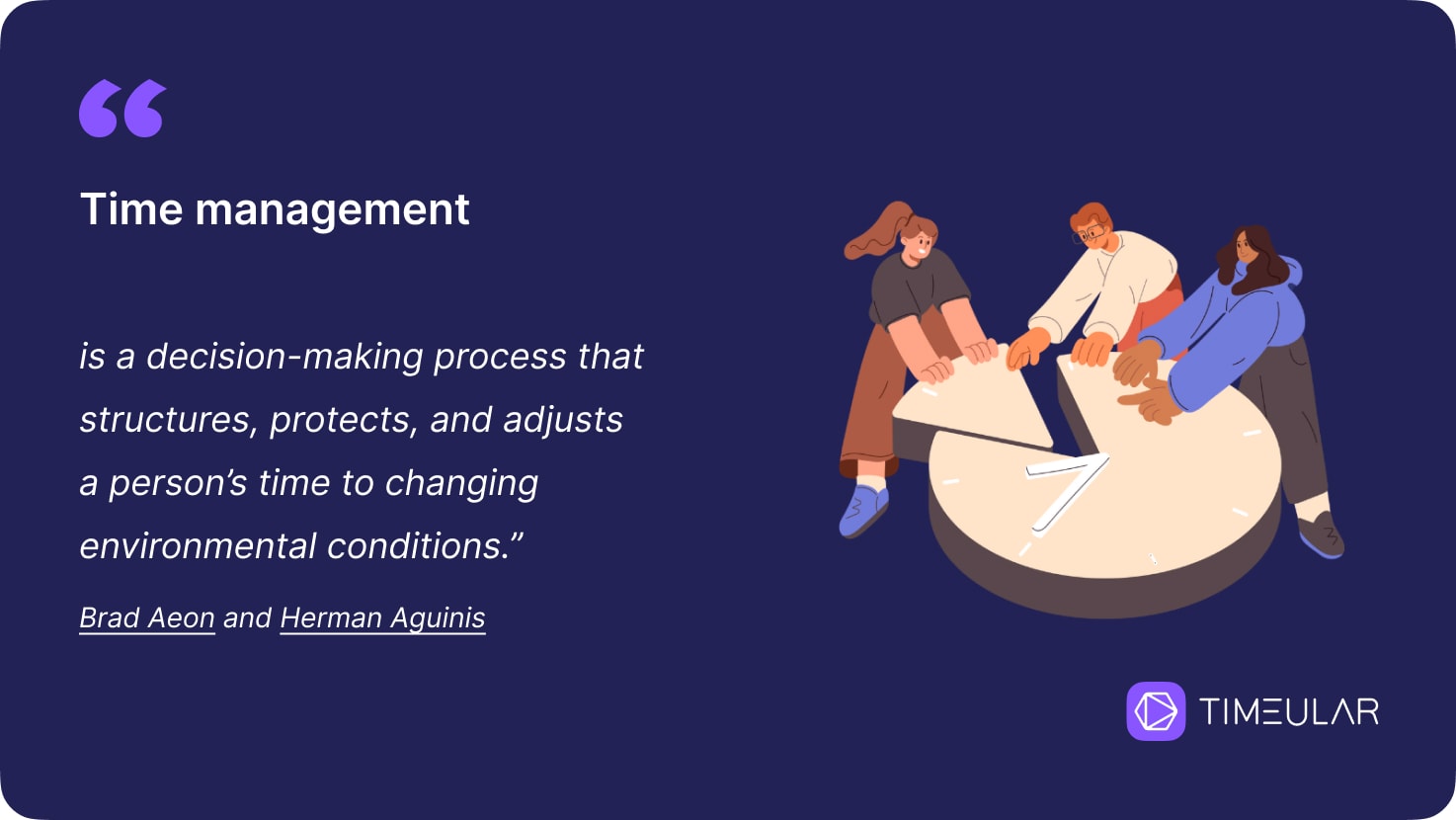
Why do you struggle with time management?
Yes, time management tools and techniques are undeniably pivotal in our productivity and in our ability to finalize our to-do list or have successful project management, but these are not enough.
So, before we jump into techniques for time tracking and the best time management tools, you need to have clarity on why you’re struggling with time management today.
You’re overestimating: We often fall victim to the planning fallacy, overestimating what we can accomplish in a given timeframe and ending up with piling to-do lists. How often do you plan to complete a report in two hours but end up taking four, throwing off your entire schedule? This has to do with setting realistic goals, not with learning better time management practices.
You don’t prioritize: Without clear priorities, you may waste time on less important tasks while neglecting your most important ones. Do you spend hours answering non-urgent emails while a critical deadline for a major project looms unaddressed? Then, work on your task prioritization behaviors first.
You get distracted easily: You cannot really avoid distractions, notifications, and instant gratification nowadays. The “I’ll check social media for just a minute” easily turns into an hour of lost productivity. It might be useful to learn how to overcome procrastination first.
You’re not planning realistically: Failing to plan ahead leads to wasted time and missed deadlines, not to mention time anxiety. You need to have an in-depth look at everything that needs to get done and critically plan your tasks and workload.
You’re using outdated tools: To the extent that tools help us boost productivity and deliver great work, to that same extent, they slow us down and block our progress if they’re outdated. Regardless of whether it’s a project management tool or a task management tool, it needs to be fast and automatic and speed up your work instead of interrupting it.
You never say no to work: Taking on too many commitments can spread your time too thin. You need to understand if you’re struggling with an underlying time management issue or an inability to say no, and then start using a time tracking software. I’ve written a comprehensive guide into how to say no at work, which might help you if that’s your case.
Did you know that even a simple method like Don’t Break the Chain, the productivity method that made Seinfeld a legend can have a big impact on your productivity?

“We have become 20% more profitable because everyone is in the habit of time tracking.” – Richard Wingfield, Head Geek at Envision Design
Make sure that you understand these challenges as the first step toward addressing them before starting to apply other time management skills or investing in time-tracking software. Nonetheless, let’s explore what time management strategy suits you among the following techniques.
Time management techniques to apply
1. The Pomodoro Technique
Developed by Francesco Cirillo as a student, this technique uses a timer to break work into intervals. I may be biased, as it is my favorite time management system, but it does wonders in the way I approach task management.
So, with the Pomodoro timer, you’ll have a focus session of 25 minutes (called “Pomodoros”), separated by a short break of 5. Then, the cycle continues. The Pomodoro deep work session can differ in length based on how much time you need to focus.
This time tracker helps me keep my focus for 25 minutes at a time and primes me to direct my attention to only one task that I need to progress within that amount of time.
How to apply the Pomodoro technique:
Choose a task to work on.
Set a timer for 25 minutes.
Work on the task until the timer rings.
Take a short 5-minute break.
Repeat.
After four Pomodoros, take a longer 15-30 minute break.
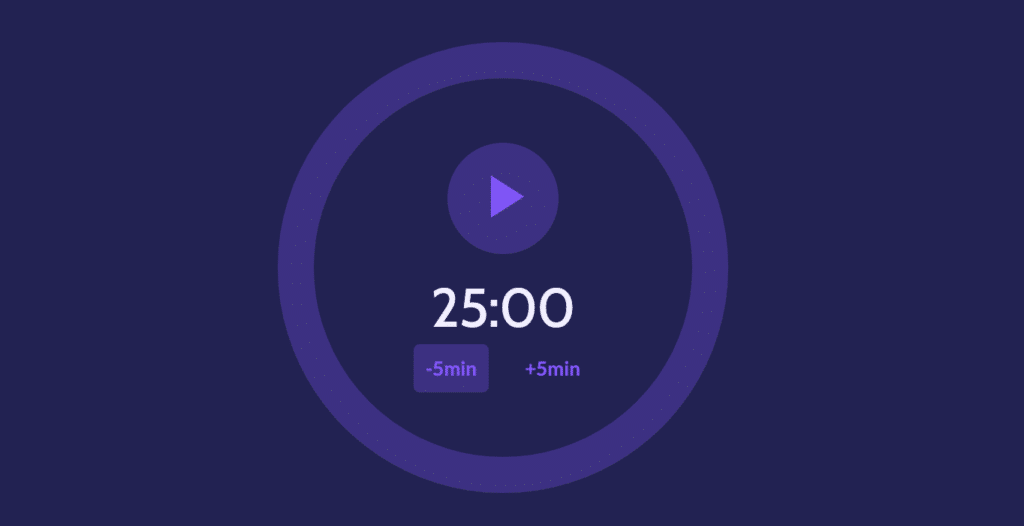
2. The 1-3-5 Rule
The 1-3-5 Rule is a simple method for prioritizing daily tasks, be it administrative tasks or tasks requiring more mental capacity. I’ve discovered this technique recently, and I have to say, it’s helping me feel that I’m accomplishing multiple varied tasks in a day. Moreover, I found that it helps me balance my workload and track progress easily on work.
This rule involves completing the following:
One big task
Three medium tasks
Five small tasks
Seems doable, right? For me, it really was a game changer that put things into perspective when it comes to task and time allocation. Particularly if you’re overlooking the difficulty of some of your tasks and feel like you can achieve more than you actually can in a day.
Here’s how to use the 1-3-5 Rule:
Identify that one major task that requires significant time and effort.
Select three medium tasks that are important but less time-consuming than your big task.
Choose five small tasks that can be completed quickly, such as responding to emails or updating your to-do list.
Focus on completing these nine tasks throughout your day.
Example: Your 1-3-5 list might include writing a project proposal (big task), doing some research, updating a spreadsheet, preparing for a team meeting (medium tasks), responding to emails, updating your calendar, and filing expense reports (small tasks).

Powered by AI and supercharged with easy-to-use methods, Timeular helps you track time in < 1 minute a day.
3. The Eisenhower Matrix
Named after President Dwight D. Eisenhower, the Eisenhower Matrix helps you prioritize tasks based on their urgency and importance. With this powerful time management tool, you learn to assign tasks into the following four quadrants:
Urgent and important (Do): Crisis, pressing problems, or deadline-driven projects.
Important but not urgent (Schedule): Planning or relationship building.
Urgent but not important (Delegate): Interruptions, calls, or some meetings where your presence is not mandatory.
Neither urgent nor important (Eliminate): Time wasters, emails that can wait, or phone calls.
How to apply the time management Matrix:
List all your tasks for the day or week.
Assess each task’s urgency and importance.
Place each task in quadrants accordingly.
Take action: Start with important tasks and urgent tasks, followed by the other quadrants.
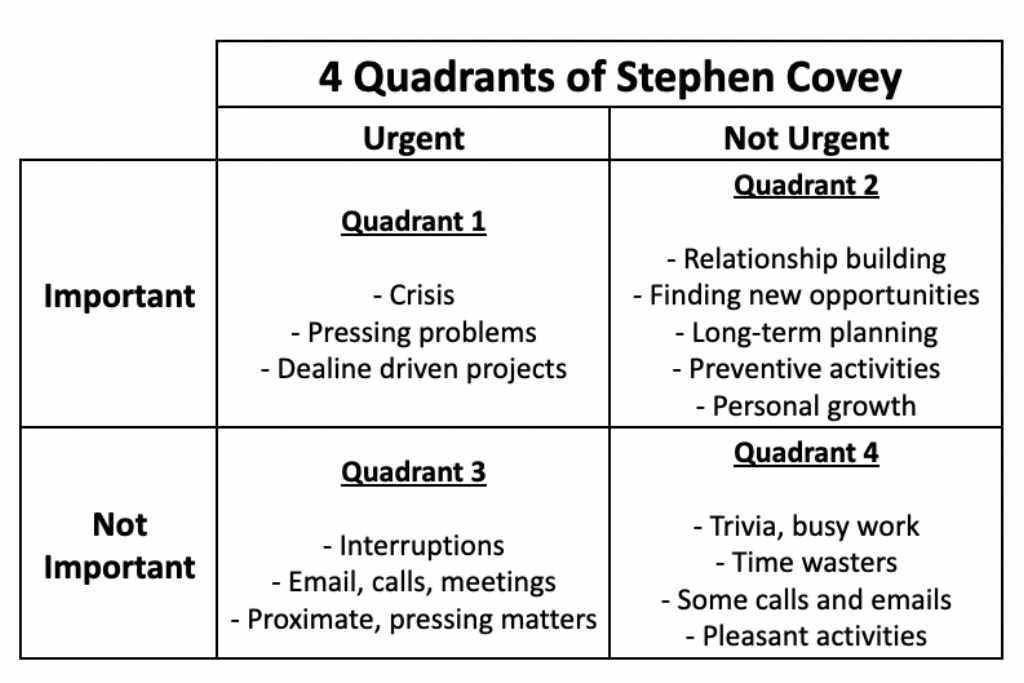
4. Time blocking
The time-blocking method helps you literally “block” your time and protect it. It involves dividing your day into dedicated time slots for specific tasks or activities. This way, you know that time spent on certain important tasks is planned in advance, and nothing can interrupt your progress on key priorities.
Here’s how to implement time blocking:
Identify your most important tasks and estimate the time needed for each.
Divide your day into blocks of time (e.g., 30 minutes, 1 hour) and assign tasks to each block.
Treat each block as an appointment with yourself and resist interruptions during these focused work sessions.
Include breaks and buffer time for unexpected tasks or delays.
Review and adjust your time blocks regularly based on your progress and changing priorities.
Recommended reads:
- The 2 2 3 schedule
- Business productivity reinvented: Unconventional ways to stay ahead of your competition.
5. Eat the Frog
“Eat the Frog” is a time management strategy that encourages tackling your most important, challenging, or dreaded task first thing in the morning. That task is your “frog,” essentially. By completing this task early, you build momentum and a sense of accomplishment that carries through the rest of the day.
I have to admit, this is not my favorite method, as I’m becoming more active later in the day, but my colleague, Karolina, loves this method. Here is what she says:
My favorite time management strategy? Start the day or week with the least pleasant task. This technique, called “eat the frog,” ensures I complete all my to-do list tasks, not just the ones I find interesting. Karolina Matyska, Senior Content Marketer
Here’s how to apply this technique:
Identify your most critical or daunting task for the day.
Tackle this task first before moving on to other activities.
Resist the temptation to procrastinate or work on easier tasks first.
Celebrate your achievements to fuel your productivity throughout the day.
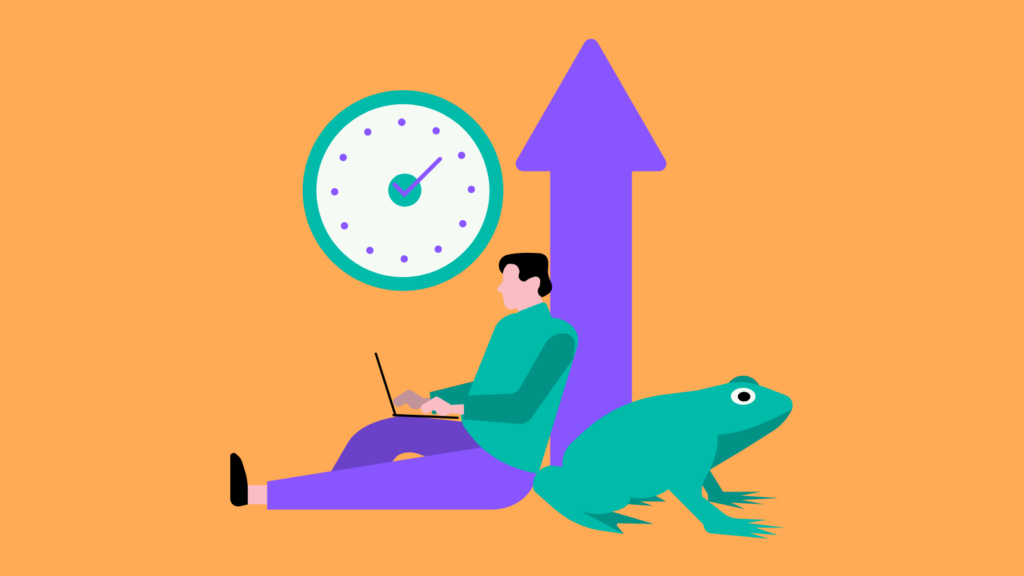
5 Best time management tools
Time management tools have many use cases in a business. Time tracking software helps capture billable hours, which are then invoiced to customers, and helps make critical decisions based on the time tracking data. At the same time, such tools help make better project management decisions with data-backed estimates. Before choosing your tools, make sure you understand the downsides of electronic monitoring.
Let’s dive right in and uncover the features of each time management tool.
1. Timeular for centralized time tracking and leave management
Timeular is an all-in-one time tracking app that stands out with its smart, secure, and automated ways to track time, as well as its time-tracking cube.
What’s more, Timeular is powered by AI functionalities and allows for leave tracking, too, allowing for a unified and automated solution for multiple functions.
Awarded by Capterra for its intuitiveness as the “Best Ease of Use Tool in 2023” and used by 100.000+ users, Timeular removes the guesswork from your data while it requires a simple commitment on your side: to spend only one minute of your day filling in your timesheets. Timeular will take care of the rest.
Here are Timeular’s key functionalities:
It offers seamless ways to track time: automated time tracking, AI-based time entries, or manual time tracking for the old-fashioned. Note that regardless of the method, you won’t spend more than 1 minute a day tracking time with Timeular. It’s that easy!
It’s the only time-tracking app with a physical device included that, once flipped, tracks another task in the software.
It’s loved by its 100,000 users, as it makes time tracking fun, enjoyable, quick and tactile.
It allows users to automate, customize, and export time reports fast. The bonus is that the reports look clean, and there’s no Excel formula involved in the process.
It works as an overtime tracker, too, so all overtime or deficit hours of an employee are automatically captured in reports based on their preset work hours.
It’s designed to notice individual productivity patterns with AI, such as apps that make you procrastinate or inform you at what times you’re the most productive.
It captures billable hours and PTO tracking and sends notifications to fill in detailed timesheets while staying within budget. While Timeular is available to unlimited users in its Enterprise time-tracking plan, its price for a personal plan starts at $ 6,89.

- Read more: How to fill out a timesheet
2. Todoist for seamless task management
Todoist is a simple, user-friendly interface that is powerful for time management due to its main feature: to-do lists.
You need to keep in mind that Todoist is not a native time-tracking software but a task-management tool. It helps you organize and plan your tasks in a to-do list, as well as collaborate on team projects.
Here are Todoist’s key functionalities:
It has a clean interface that contributes to seamless task management
It supports robust task management by allowing you to set recurring dates, categorize tasks by priority, sections, and subsections;
It allows you to add voice notes, comments, and screenshots to assigned tasks;
It includes a wide variety of templates to add your tasks on instead of creating your own templates;
It makes it easy to collaborate by sharing projects with your team and delegating tasks or team scheduling;
It adds fun and enjoyment to your to-do lists with gamification by giving you a preview of your achievements.
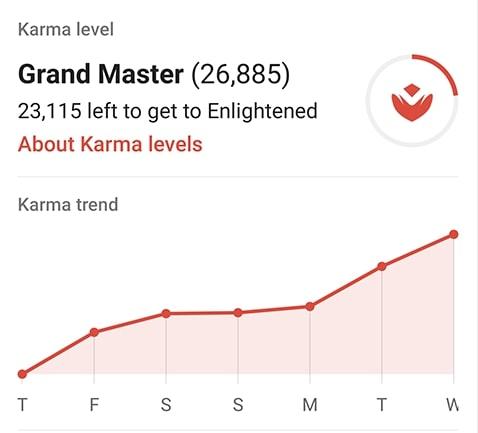
3. Remember the Milk for an organized to-do list
By its name, you can understand that Remember the Milk was created to help users no longer forget that bottle of milk they wanted to buy at the grocery store, but they came back home without it.
However, Remember the Milk grew beyond grocery lists and supports more than that. It is, in essence, a to-do list app designed to simplify and plan tasks efficiently without forgetting the most important items.
Here are Remember the Milk’s key functionalities:
It includes a smart list feature that automatically creates new lists based on your search criteria;
It provides location-based reminders triggered when you enter a specific geographic area or location;
It offers color-coded tags to help differentiate and prioritize tasks based on their colors, so you no longer forget the milk;
It enables you to filter tasks by priority to focus on the most critical items first.
It supports intuitive task sharing and delegating to collaborate seamlessly with your team;

4. Forest for focus and productivity
Staying focused, just as mentioned above, in the section on struggling with time management, is not an easy task in itself. So Forest tries to change that by gamifing the process of staying focused and mixing it with a charity incentive.
In essence, when you have a focus session, you “plant” a virtual tree. If you leave the app before the set time, your tree dies. Over time, you grow a forest representing your focus sessions, and that’s the visual representation of your productivity. This adds a sense of purpose to the app and contributes to environmental sustainability.
Here are Forest’s key functionalities:
It offers gamified focus sessions with virtual tree planting to visualize your progress and productivity;
It includes customizable focus timers ranging from 10 minutes to 2 hours, depending on how long you need to focus;
It features a real tree-planting initiative through a partnership with Trees for the Future, and it showcases unlockable tree species to keep you motivated.
It allows for collaborative focus sessions with friends.
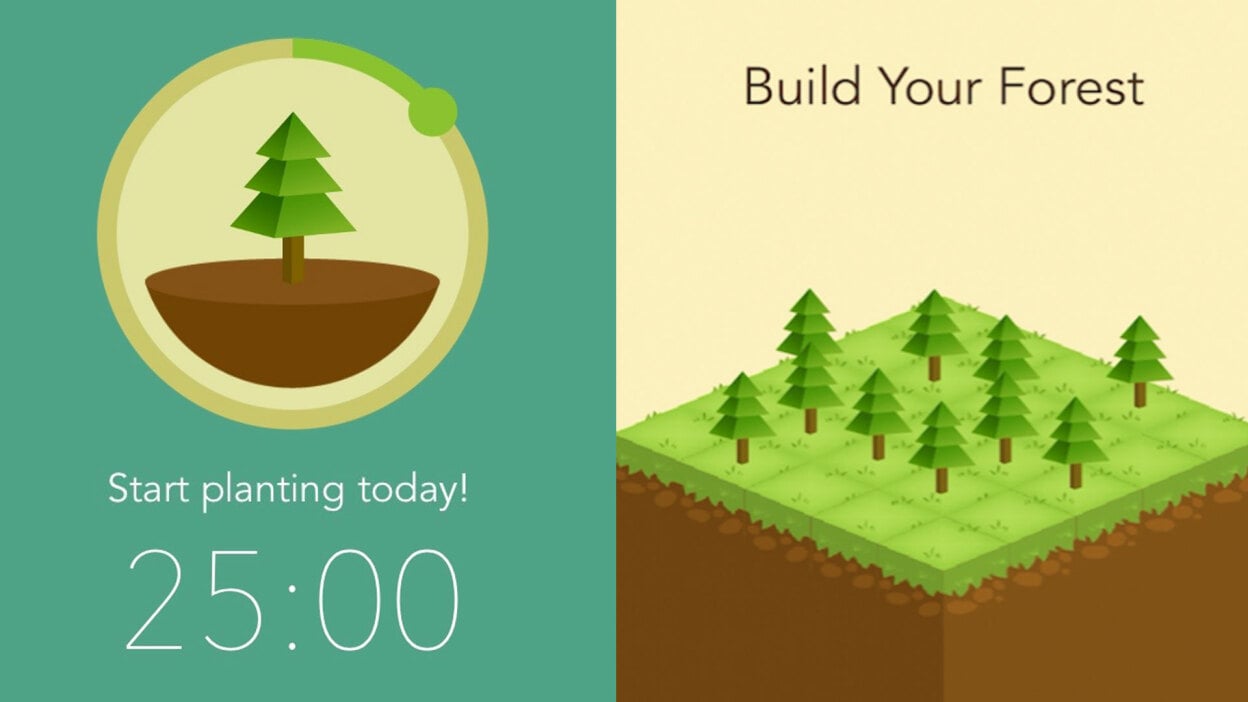
5. Trello for task and project management
You must have heard of Trello if you are not already using it. Trello is a project management tool that transforms complex projects into visually compelling boards.
Trello wins users over with its simplicity and allows you to organize, prioritize, and track tasks with an intuitive, drag-and-drop interface.
It offers a visual board, list, and card system for organizing tasks and projects, which makes it easy to get a quick glance view of project progress;
It comes with an intuitive drag-and-drop functionality for super easy task management;
It includes customizable cards with checklists, due dates, and attachments and allows anyone to add comments.
It integrates seamlessly with a wide variety of tools, among which are Google Drive, Dropbox, and Slack;
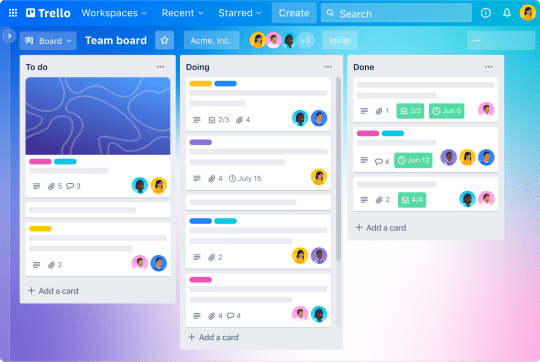
Start mastering your time management
Effective time management is a combination of being time-aware, using the right tools and techniques, and staying consistent.
Remember, mastering time management is an ongoing process adaptability, too, but when coupling all elements introduced above, you should unlock the key to successful time management.

Powered by AI and supercharged with easy-to-use methods, Timeular helps you track time in < 1 minute a day.
FAQS
What can I use time-tracking software for?
Manage remote teams, balance team workloads, inform your project management decisions, or boost productivity. Note that such employee monitoring software should protect an individual’s privacy and personal life and not intrude into all their tracked time entries, which can be personal.
What are the pivotal features a time management tool should have?
Some of the features that are interesting to try are features that allow you to understand your apps and computer usage so you can surface behaviors that stifle your productivity, track hours of work for unlimited projects and others. It might be necessary for some time tracking tools to include features like invoice creation and seamless integration with as many tools as possible. If you’re unsure what tool to start with, you could start with a free time tracking app or an app that offers a free trial.